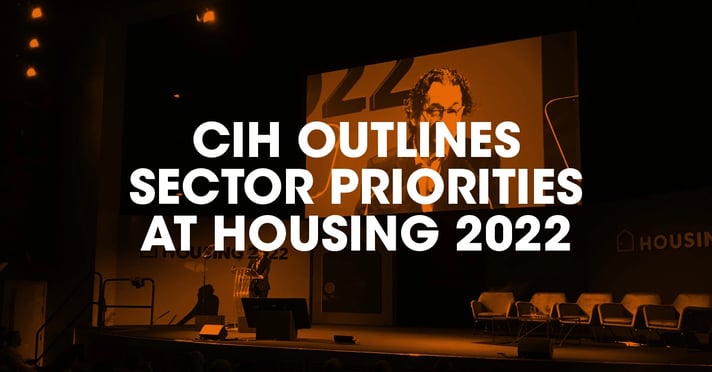On the agenda
According to Smart, contemporary issues like the cost of living crisis and inflation are compounding the legacies of the effects of the COVID-19 pandemic and Brexit, with a host of knock-on effects to the building industry.
While the cost of living crisis will have significant effects on existing tenant’s ability to pay rent and heat their homes, inflation is affecting new homes as well.
Construction materials, already affected by supply chain problem, surge ever-upwards in price, threatening more project starts.
The building trade is also struggling to source enough skilled workers to fulfil all the roles on their projects – some in the industry are already suggesting that procuring appropriately skilled labour will be a bigger problem than materials in 2023.
In challenge there is opportunity
While chief executive Gavin Smart was clear about the scale of the difficulties facing the industry, the issues are not without opportunities to act.
A need to accelerate the creation of new housing means a closer look at re-invigorating the UK’s enthusiasm for Modern Methods of Construction (MMC). Embracing MMC might also let us alleviate some of the effects of a labour shortage, by centralising some specialist fabrication skills in off-site factories.
Embracing MMC would also make it easier to create a supply of more affordable, better-insulated, energy-efficient homes, driving down the stresses in the private and social housing sectors as the cost of heating homes rises.
Climate notable by its absence
Walking the floor of Housing 2022, or looking at the agenda for many of the speaking events, climate change and the environment are unavoidable topics.
There are a swathe of “eco” and “enviro” brand names, and no shortage of speaking slots exploring the challenges (and opportunities) that the housing sector faces on the UK’s road to achieving net-zero.
The environment was largely absent from Smart’s keynote address, which was understandably focused on the here-and-now issues of inflation, costs, and labour and material shortages that make focusing on seemingly distant net-zero goals more difficult.
However, the subject is present in the solutions discussed to easing the issues presented. From better energy efficiency to embracing to making better use of MMC and innovative technologies, an industry that better serves residents can also better serve the environment.
The silver lining for home builders
While the housing and home-building industry faces many difficulties in the near-future, there is a clear consensus on one thing – the UK needs more homes.
Reflected not just in Gavin Smart’s address but other speakers across Housing 2022, there is a clear consensus that the UK needs to build more housing and build it faster.
The potential return of right-to-buy could compound that need, as homes disappear from the social housing stock and move into private hands, reducing an already-stressed resource in high demand. At the very least, to maintain the social housing stock at its current level, every home sold would have to be replaced on a like-for-like basis.
‘Levelling up’ the country means creating more secure, decent, and affordable homes, there are few solutions to the challenges facing the nation’s housing situation that don’t involve building more of it.
How those challenges will play out and be addressed may be unclear for the present, but home builders have their part to play.


Have your say